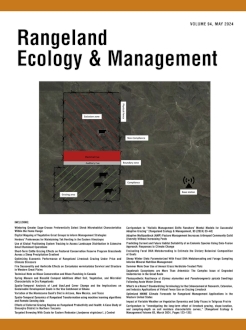Mineral nutrition deficiencies commonly occur in extensive sheep production systems, yet often coincide with critical production periods of breeding and gestation when quality and quantity of winter range are most limited. Ewe productivity may be limited by clinical and subclinical mineral deficiencies when grazing extensive rangelands during the winter months. The objectives of this study were to utilize fecal meta-barcoding DNA (f.DNA) to estimate dietary composition of ewes by plant morphological group (monocots and dicots), and quantified plant nutritional composition from clipped biomass to estimate adequacy of macro- and micro-minerals of the basal diet across extensively grazed sheep operations. Ewe fecal samples for f.DNA were collected from 19 extensive sheep operations across Wyoming and Colorado, USA, and analyzed at the plant morphological group level to estimate dietary composition as 1) Monocot (≥ 70%), 2) Dicot (≥ 70%), or 3) Mixed (monocot and dicot co-dominated, both proportions < 70%). Pooled forage species nutritional composition within morphological group (monocot vs. dicot) was then multiplied by the proportion of monocotyledonous species or dicotyledonous species and intake estimates of 2% of BW on an 80 kg ewe to estimate macro- and micro-mineral intake. Results from f.DNA indicated 36% of operations were categorized as Monocot (≥ 70% dietary component), 42% Dicot (≥ 70% dietary component), or 21% Mixed. A significant effect of plant morphological group category was observed for CP, Ca, K, Mg, and S (P < 0.05) where dicot dominated rangelands contained higher concentrations of these minerals compared to monocot or mixed monocot-dicot rangelands. Overall, dicot dominated rangelands provided greater macro- and micro-mineral content ultimately meeting more requirements for breeding and gestation than monocot or mixed monocot-dicot rangelands. Therefore, targeted supplementation must be considered for ewes on monocot or mixed monocot-dicot rangelands during winter months that coincide with critical production stages.
BioOne.org will be down briefly for maintenance on 14 May 2025 between 18:00-22:00 Pacific Time US. We apologize for any inconvenience.
How to translate text using browser tools
17 May 2024
Sheep Winter Diets Parameterized with Fecal DNA Metabarcoding and Forage Sampling Informs Mineral Nutrition Management
Alexis A.M. Julian,
John Derek Scasta,
Whitney C. Stewart
ACCESS THE FULL ARTICLE

Rangeland Ecology and Management
Vol. 94 • No. 1
May 2024
Vol. 94 • No. 1
May 2024
deficiency
Fecal meta-barcoding
forage
Nutritional management
Ovis aries




